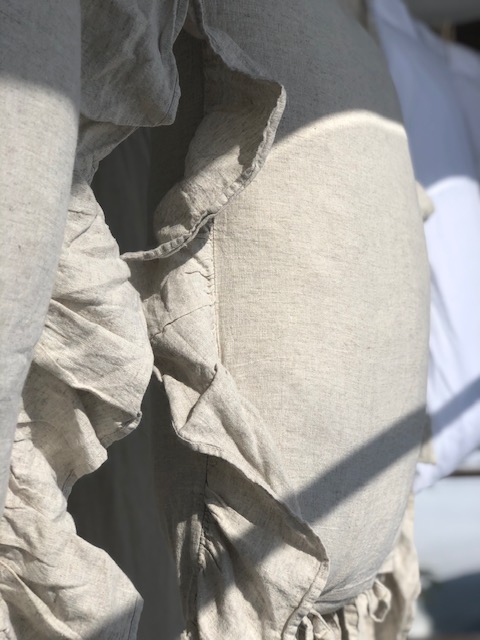Reviving old practices ~ Part 1
How often do you realize that certain behaviors of your mother or grandmother, which you made fun of when you were young(er), become your own? Suddenly they make a lot of sense, seem to be so clever, useful, or maybe simply bring peace to your daily hectic life. “Their time” does not seem to be so distant and backwards anymore…
I often think of my grandmother, praising her stoic calmness, love she had for everyone, generosity, kindness, compassion, and faith in God. I recall the abundance of knowledge she had of herbs, wild berries, mushroom, gardening, baking, cooking, sewing, and realize how much of it is lost. What’s left are the heartwarming memories of walks by her side when she was picking the roses to make the marmalade, or chamomile to dry for tea. She would know what kind of mushroom to avoid and when was the best time to harvest fruits and vegetables. I remember her clean apartment, ironed bed sheets, polished shoes, handbags and berets stuffed with cloth napkins to keep the shape. She would ask me to clean the leaves of her plants and organize the drawer with her sewing supplies.
While the recipes and “know how” may be gone with grandma who passed away last year, the memories stayed with those who were blessed to live by her side. Even if she is no longer with us physically, she comes to mind every time we incorporate her practices in our lifestyle.

In this post I will write about the benefits of exposing pillows and comforters to the sun and fresh air as I recall the cleanliness being on top of grandma’s list. And honestly, not only grandma’s as the piles of throws, blankets and pillows hanging over balconies, windows or stretched on the twines were common scenes from my childhood. Especially on Saturdays! As long as there was a sunny day, someone would decide to spruce up their bedding.
I believe the tradition is tied to the materials the comforters and pillows were mostly made of. For many years, goose and duck feathers and down were used to prepare the inserts. The sets were handmade, thus expensive, and brought as a dowry into the marriage. The natural “stuffing” provided comfort and could last for years if the proper care was taken. It could also be a source of troublesome allergies, skin inflammation or breathing problems if due to neglect, it would grow mites, bacteria, fungi, and other organisms.
The care instructions included frequent exposing the feather/dawn bedding to fresh air, which penetrates through the individual layers, not only lifting it and making it fluffy but helping in eliminating the unwanted microorganisms. The best season for doing so is winter, particularly dry and frosty days as the low temperatures allow to eliminate bacteria and keep the bedding fresh and clean. In summer the airing should be done in a dark, cool and airy place, avoiding the sun’s rays, as the heat supports the growth of bacteria and creates an excellent environment for other microorganisms.
As the feather and down bedding is still made to this day, it is rather expensive, and many alternatives are available. Depending on the materials the bed pillows and comforters are made from, they may be able to be machine washed. Washing however, may gradually deform them. To preserve the shape and prevent the microorganisms from nesting in our down alternative bedding, we should consider hanging it in the warm sun for a couple of hours when time and weather allow. From time to time, we should also remove all mattress covers and open the bedroom windows to let the sun rays naturally purge it of many germs and bacteria.
Airing our bedding sets is also the fastest and one of the most effective ways to refresh the entire room and ensure healthy conditions in the bedroom.